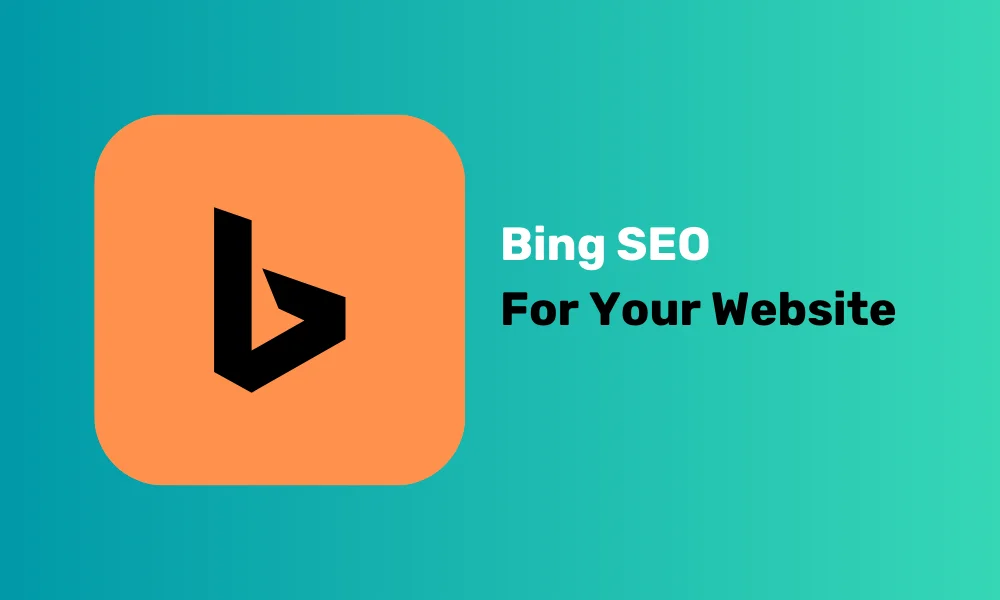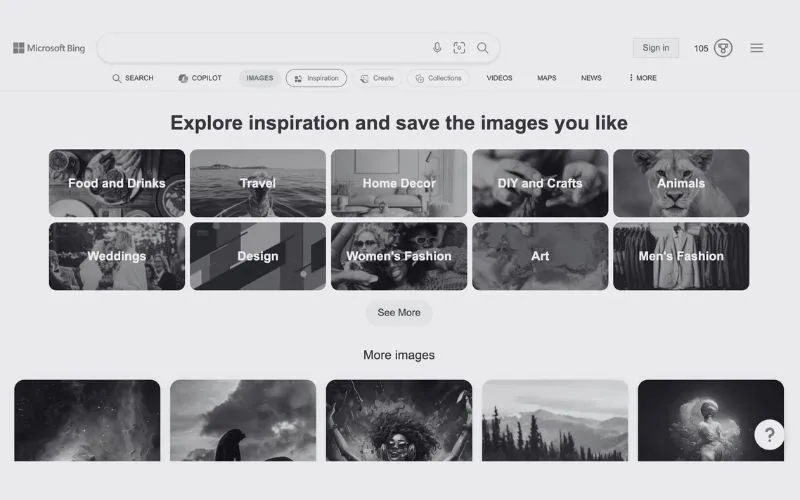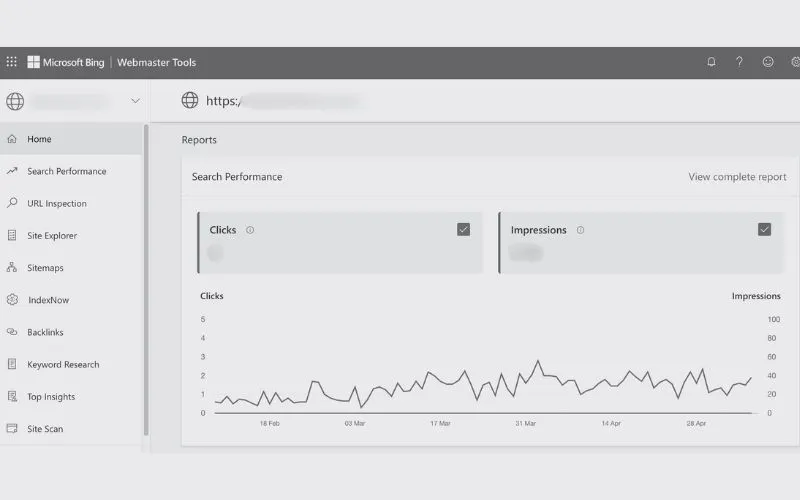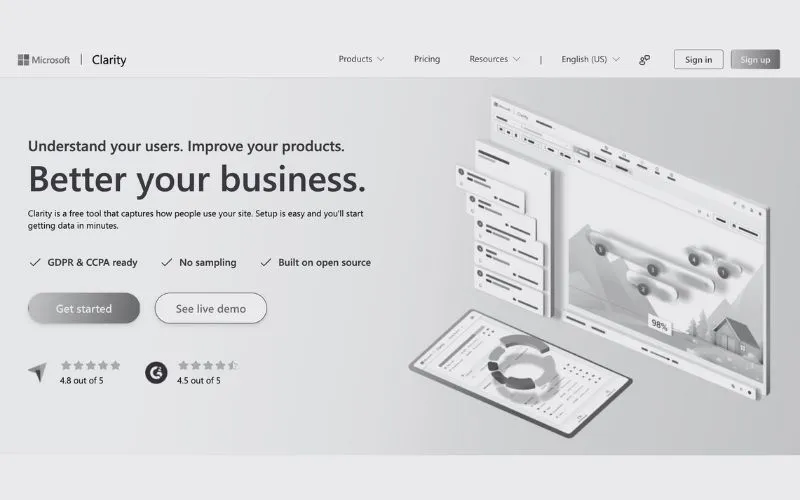
Bing SEO: Why It Matters and How to Master It
Table of Contents
Bing, a Microsoft web search engine, is Google’s closest competitor in the search engine market.
According to Statcounter Global Stats, for the period September 2022 to September 2023, Bing accounted for 3.01% of the search engine market share versus Google’s 91.58%. While in percentage terms it may seem minuscule, in absolute terms, Bing commands over 900 million searches per day, which is 27 billion web searches per month.
Why Bing SEO Matters?
We’ve seen from the stats above that Bing has the second highest search engine market share.
In other words, Bing is still a major player. Ignoring Bing means missing out on potential traffic from millions of users who use it as their preferred search engine.
This applies especially for Windows users, since Bing is the default search engine for Microsoft’s web browsers.
On the flip side, with Google dominating the search engine market, Bing becomes less competitive. This gives you an opportunity to gain more visibility.
For any Business looking to grow online, Bing should be an essential part of the organic search strategy.
How Is Bing Different from Google? Is One Better Than the Other?
The following are some of the important differences between the two search engines:
1. Social Signals
The major noteworthy difference between Bing and Google is that while Bing uses social signals as a ranking factor, Google doesn’t use social media as a part of its ranking algorithms.
Google wants to play it safe. Google says it doesn’t want to use incomplete or misleading data. Bing’s webmaster guidelines look at this matter differently. Bing says if you are socially influential, your followers would share your information widely. Bing sees this as a positive signal. And this positive signal has a positive impact on how your content ranks organically over the long term.
2. Image and Video Search

Bing Webmasters Guidelines confirm that Bing can extract information from multimedia content that includes images, captions, structured data, titles, and related text such as transcripts.
This allows Bing scores over Google in Image Search.
Image search is extremely important in ecommerce. And Bing is better because it delivers higher quality results. For instance, a shopper can search for different layouts, and they can quickly see the licensing information for each image. They don’t need to figure out where to look for this information.
Bing launched infinite scrolling for image search results first. It’s no longer unique, though. Google also offers this feature now.
Video search, too, is more hassle-free with Bing. You might be wondering that since Google owns YouTube, perhaps it’s better on this front.
Your search for a video on Bing will typically show up the results as a thumbnail grid. Unlike with Google, you don’t need to leave the SERP to watch the video you want.
3. Exact Match Keywords
For the last several years, Google has been working overtime to improve search accuracy.
Google aims to understand searcher intent better and interpret contextual cues from different websites. This is labelled semantic search.
Semantic search relies on artificial intelligence (such as the RankBrain algorithm) to understand the content of a web page.
RankBrain is, in fact, the third most important factor in Google’s ranking algorithm. This clearly implies that exact match keywords aren’t as important for ranking higher on Google SERPs.
But Bing is a bit rusty in this area. When it comes to broad-matching keywords, Bing advises using targeted keywords whenever possible. Exact match keyword is, in fact, one of the key Bing ranking factors.
So, you can rank better in Bing SERPs by using exact keywords. And this includes using exact keywords in your domain, H1 and H2 title tags as well as meta descriptions.
4. Backlinks
Both Bing and Google value backlinks.
As a result, backlinks have historically been given a lot of importance. In 2023, even though many other ranking signals have gained importance, both Google and Bing still value backlinks.
Backlinks indicate that your content is useful to visitors, they trust the information on your website, and they want to share this information with others.
Google uses PageRank (PR) for gauging the trust of domains that link to your content. The weight of each link can be decisive. For instance, a few high-PageRank links are worth far more than hundreds of low PageRank, spammy links.
Bing judges link quality slightly differently. While Bing values high-quality links, there are other factors at play, as well. Domain Age is one factor. The other factor that Bing favours is certain domain extensions, such as .gov, .edu and .org.
One important point you need to remember is both Bing and Google look suspiciously at unscrupulous link building. So, forget quantity. Focus on quality.
5. Multimedia Content
Bing places a high emphasis on multimedia content.
Bing has been focusing on visual search for some years now. Bing search spiders crawl and understand different kinds of multimedia content, such as audio, video and images.
The key difference is while Google can’t crawl Flash websites, Bing can crawl and understand them.
Google search algorithms rely mostly on text-based content and Flash websites are invisible to them. And Google does not place a high emphasis on high-quality images and videos, at least not as much as Bing does.
6. Technical SEO
There are some differences between how Google and Bing crawl a site.
In the case of Google, we can be assured that it will crawl and index every page on the site.
Bing, on the other hand, focuses on crawling and indexing only the key pages on the site and does it infrequently. The good news is that you can control the crawl rate using the ‘Crawl Control’ in the Bing Webmaster Tools.
Along with it, you can submit your sitemap to Bing Webmaster and include it in your robots.txt – which is considered a ranking signal.
Is Google Better Than Bing?
When it comes to ecommerce search, there’s no doubt that Google is the top dog. But you cannot afford to ignore the second-best search engine because Bing’s market share is growing. Bing can also send traffic to your store. And Bing can help your online store reach entirely new audiences.
So, I wouldn’t say Google is better than Bing. You can optimise SEO for Bing easily as there’s less competition and grow your ecommerce revenue faster. Optimising SEO for Google takes a long time and is highly competitive.
What Are Bing SEO Ranking Factors?
Before we look at Bing ranking factors, it’s important to understand why you need to optimise your eCommerce business’s SEO for Bing at all. Traffic to your store from Bing is more valuable than traffic from Google. There are several reasons for this.
Shoppers coming from Bing typically show a lower bounce rate, spend more time on a web page, visit more web pages, and click more affiliate links. So, optimising Bing SEO for your store and checking your rankings will help you corner additional traffic sources.
Also, major virtual assistants, such as Amazon’s Alexa, Microsoft’s Cortana, and Apple’s Siri use Bing for voice search.
Let’s now move on to Bing SEO ranking factors.
1. Valuable Content
Bing’s expectations are clear: Your content needs to be relevant and useful to your target audience. Bing may be slightly lenient compared to Google on the content front. But the quality of your content is definitely a key SEO ranking factor on Bing.
Fabrice Canal of Bing recently said that they did what was best for the searcher. Fabrice said they focused on retrieving the best content, satisfying searchers and delivering the best content on the world wide web.
The content quality guidelines of Bing are based on the following three pillars: Authority, Utility and Presentation (AUP). This is similar to Google’s EEAT— Experience, Expertise, Authoritativeness and Trustworthiness.
Authority: Bing uses elements such as the author’s identity, citing sources and social networks to determine the trustworthiness of your content.
Utility: Bing looks for web page elements such as graphs, images and videos that support multimedia content.
Presentation: Bing looks at the way you present your content. The right way of using and presenting ads will also determine the content quality.
2. Social Media Shares
Bing considers social shares and likes as a chief ranking factor.
That’s the reason you need to consider your overall social media performance when you are optimising Bing SEO. Hence, getting social shares is a huge positive factor, even when the links themselves don’t drive a lot of traffic to your store.
The Bing algorithm acknowledges social signals. So, if your content has been shared extensively over social media, it will rank higher on Bing.
Focus on sharing your content via the most relevant social media platforms. But having fake followers is not going to help you rank better on Bing.
3. Fast Site Load Time
Bing views slow site load time as an unsatisfactory search result and a poor user experience. If your web page loads slowly, a shopper may leave your store in a hurry.
They will probably exit even before your content has loaded on their device.
A web page that loads fast is the fundamental step to improving the user experience on your store. So, having a site load speed that is as close to zero as possible is a great way to optimise Bing SEO.
Remember, on your web store, memory-dense product images tend to slow down the web page. Check out this in-depth post to optimise your ecommerce site for image search.
4. Straightforward Keywords
After the introduction of the Hummingbird search algorithm by Google in 2012, the focus has been on semantic search and user intent. Keywords, in the old-school sense, have taken a backseat. But unlike Google, Bing isn’t obsessed with the semantic game.
The best way to optimise Bing SEO is straightforward keyword targeting. Forget about vaguely similar terms. As I already mentioned, look to use exact match keywords instead. For driving Bing traffic, verbatim keyword matching is really important.
While you can sit back and count on Google to decipher the meaning of your content and figure out your keywords, it isn’t the same with Bing. This approach will simply not work.
Bing search engine spiders are different. Therefore, keyword research is the most important step to optimise SEO for Bing and see good ranking.
5. Meta Keyword Tags
Bing differs from Google in the way it considers meta keyword tags. For the past several years, Google has been completely ignoring meta keywords. And the reason is not far to seek.
Meta keywords were heavily abused since the advent of SEO in the late 1990s.
Bing takes a different approach. Bing’s algorithm looks at the meta keywords in your web page’s source code. Although your meta keywords are not used for ranking, they are used as a spam indicator.
That is, if you don’t use the keywords listed in your meta keywords tag on the actual web page content, Bing might penalise you.
6. Location
There are some local factors that influence your ecommerce site’s ranking. User’s location, server, local queries, and language are some known local ranking factors for Bing SEO.
What Are Some of the Bing Tools That You Can Use to Monitor SEO and Site Performance?
1. Bing Webmaster Tools

This tool enables you to get your store’s performance data. You can also take advantage of free Bing SEO tools and analyse the insights they provide to improve your rankings on Bing search.
The Reporting Tools feature and the Diagnostic Tools feature provide insights into your store and help you understand what leads shoppers to your store and what shoppers are searching for.
You can then focus on increasing the traffic to your store with these reports and tools. You can also get personalised alerts and messages for your store.
The SEO features of Bing Webmaster Tools include keyword research, backlinks profile, site scan and SEO report. You can use the unique SEO tools to explore your store, manage keywords, analyse backlinks and more to help your store rank better on Bing.
2. Bing places for business

Bing Places For Business is a business listing tool, similar to Google My Business listing that may be used by online Businesses to find more customers and leads.
Listing your Business on Bing Places For Business is fairly straightforward – the first step is to claim your Business listing.
Next, you need to complete the listing profile as best as possible.
Finally, you will need to verify your listing by providing a physical address and the Bing team send you a Post card with a PIN for verification.
Once you receive the PIN and verify your Account, your verified Bing Places For Business listing will be visible online.
3. Microsoft Clarity

Microsoft Clarity is a free-to-use shopper-behaviour analytics tool. This tool allows ecommerce store owners to see exactly what shoppers are doing on their store without infringing on shoppers’ privacy.
Clarity visualises how a shopper uses your store in the form of click and scroll heatmaps. This tool can even replay entire shopper sessions.
Clarity enables you to make your store work better for your shoppers and your business, for free. Shopper session playbacks show you the things that are working smoothly and also where shoppers get stuck.
A detailed heat map shows you where a shopper clicked and scrolled and how the shopper moved around your store. Clarity helps you to discover the parts of a web page on your store that drive the most engagement.
4. Bing Search Quality Blog
Utilise the Bing Search Quality Blog to get deeper insights into the news, trends, and technology behind Bing. This will give you an in-depth knowledge of the trends and best practices as well.
5. Microsoft SEO Toolkit
This SEO Toolkit from Microsoft helps you identify Bing SEO optimisation gaps and suggests ways of improving your SERP rankings.
Bing SEO Optimisation Checklist Summary
Content plays a decisive role in any modern-day SEO strategy. Bing is no different from Google in this aspect and values high-quality content.
You can follow this checklist to optimise Bing SEO.
- Identify low competition keywords using the Keyword Research feature in the Bing Webmasters Tool
- Create valuable content based on the three parameters Authority, Utility and Presentation (AUP)
- Use exact match keywords. Don’t use synonyms
- Include your keyword in the page URL
- Use your keyword in the page title tag
- Include your keyword in H1, H2 or H3 tags
- Include your keyword in the meta description
- Ensure your ads don’t obstruct the user experience
- Optimise your product images
- Link out to 8–10 authority sites in your niche
- Link to 2–5 internal pages on your store
- Monitor your site performance
Contact Us for Data-Driven SEO Solutions
If you are an ambitious small ecommarce business looking to rank higher in both Google and Bing, request a “No-charge” 15-Point SEO Audit or make an SEO inquiry today.



Sorry, the comment form is closed at this time.